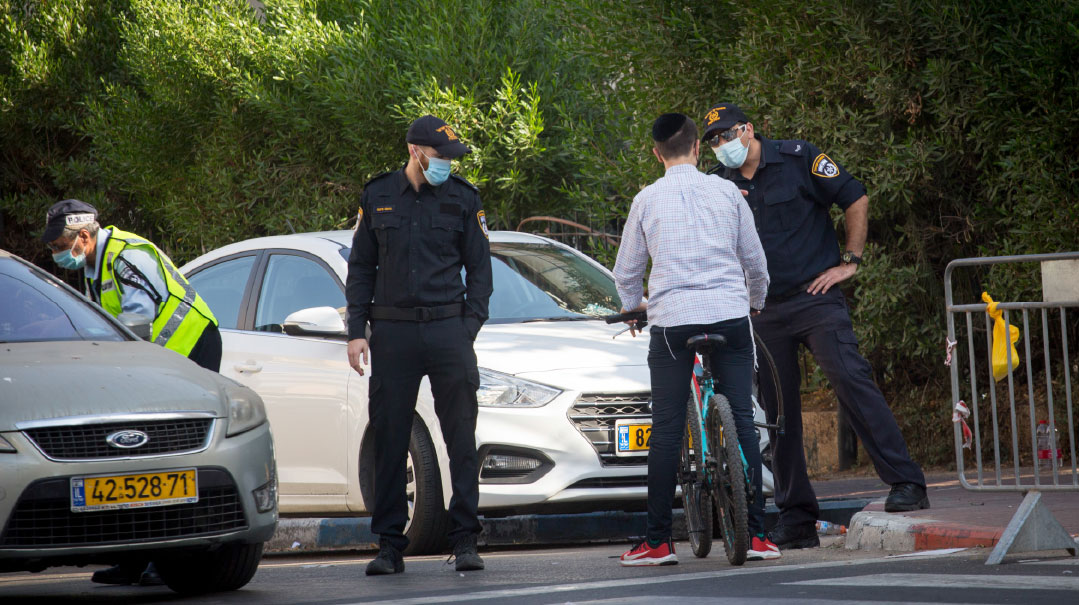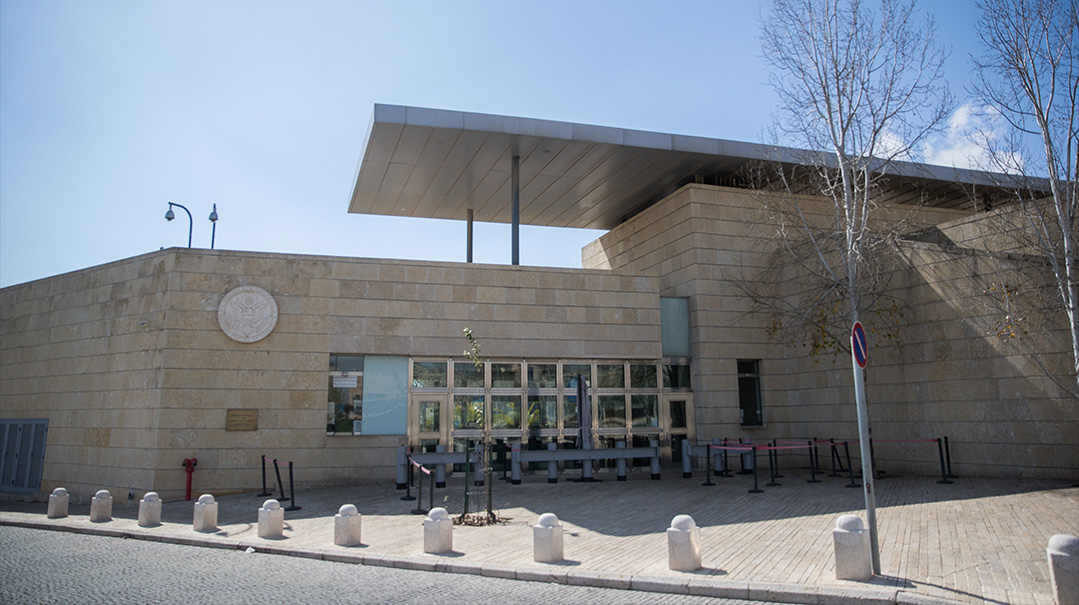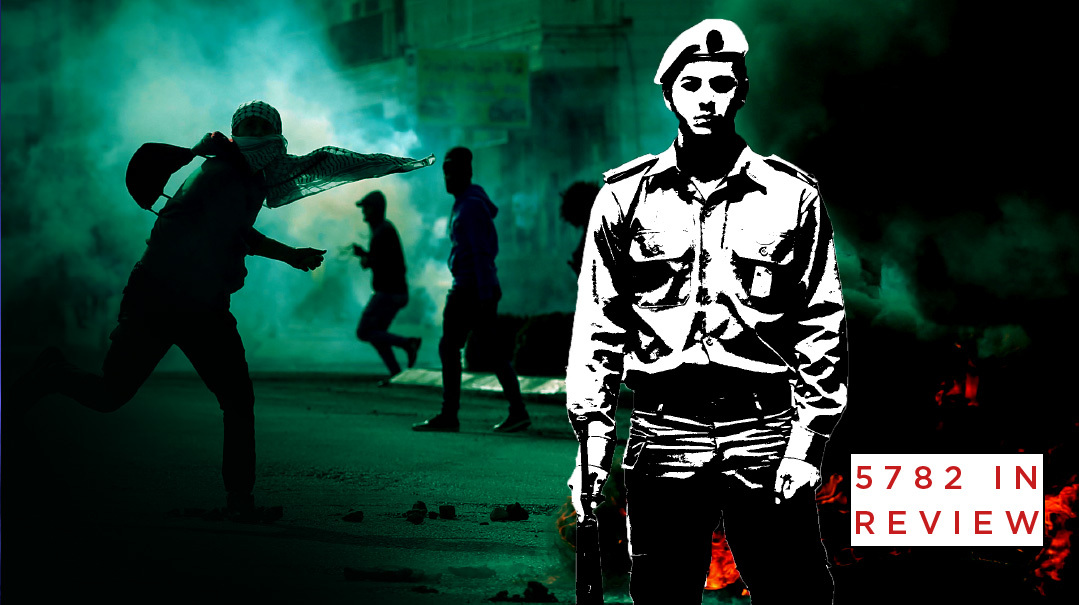Lockdowns, a Blunt and Unnecessary Tool?

The experts speak out against the lockdown cycle

Photo: Flash90
"A lockdown on isolated neighborhoods under the present situation is worse than useless. Any fall in infections it achieves in the short term will be purely temporary. The infection rate will rebound as soon as lockdown is lifted.”
This harsh analysis was offered by Professor Eli Sprecher, deputy director of research and development at Ichilov Hospital and author of the “Sprecher model” — which predicted Israel’s number of infections and serious cases in the second wave to a tee.
The government’s decision to keep the lockdown on red neighborhoods in place, a move that effectively discriminates against chareidim, has elicited a sharp reaction from chareidi representatives. Degel HaTorah chairman Moshe Gafni tells Mishpacha: “Roni Gamzu doesn’t care about infection rates. All he cares about is whether you’re chareidi.
“Thanks to our efforts to bring down the infection rate in Jerusalem and other chareidi areas, Gamzu had to resort to manipulated figures to justify another lockdown on the chareidim. I’m calling on the prime minister to discharge this man immediately. Everyone’s happy about the decline in the infection rate, and we urge everyone to follow the guidelines religiously. But you can’t exploit the situation to hurt sectors that have made tremendous efforts to bring down the infection rate, and baruch Hashem are succeeding.”
MK Gafni is referring to the traffic light plan drawn up by Prof. Roni Gamzu. Gafni’s harsh criticism stems from the fact that the picture painted of chareidi cities based on the statistics the government chose to monitor under Prof. Gamzu’s plan might look very different if different statistics had been chosen, as experts have noted. The three key parameters that the traffic light plan tracks are the virus’s growth rate, the test positivity rate, and the rate of new cases per week.
As of now the virus growth rate stands at slightly more than 1%, not a threatening statistic. The rate of new cases stands at 5%, with no difference between the chareidi and general population. The parameter that sets the chareidim apart is the test positivity rate. Among the general population it’s 7% to 8%, among chareidim 20% — well over the red line. The chareidi sector, living in crowded apartment buildings with huge families, is still seeing massive infection. No secular person shows up at a coronavirus test with four children; many chareidim do.
The key question is why those particular parameters were singled out for attention in the traffic light plan. Many professionals, for example, have expressed surprise that it doesn’t include the death rate in the at-risk population.
Another parameter it fails to address is the recovery rate. A city that successfully evacuates its patients to hotels or that has a high recovery rate deserves to be treated differently from a city full of active carriers. But the traffic light plan does not allow for this possibility.
To get a better sense of what the government should be monitoring — and of where the lockdown plan is falling short — I spoke to several leading Israeli public health officials. The views they offered not only supported Gafni’s charges, but also gave a picture of what an alternative response plan would look like.
“Before we embark on lockdown, we have to define what the goal is, so we can judge whether we have the means to make it achieve what we want it to,” says Professor Zeev Rotstein of Hadassah. “What’s the point of imposing lockdown on a red city? Curbing massive infection? Fostering herd immunity? It makes much more sense to concentrate on the sick and their families, to provide them with everything they need so they can stay at home until they recover. The healthy should be allowed to get on with their lives.”
The most tragic aspect of the current policy, Prof. Rotstein says, is that it hasn’t managed to cut off the chain of transmission, while imposing other unbearable costs. “Locking down cities and neighborhoods is a death blow to the economy and has driven countless families to the verge of bankruptcy. It’s a deeply problematic tactic that doesn’t help stop the virus.”
Professor Yehuda Adler, director of the Talpiot Medical Leadership Program and member of the National Council for Prevention and Treatment of Cardiovascular Diseases, gives a similarly sharp assessment: “Lockdown is a confession of failure in managing the virus. It is not a cure or a solution to the virus.”
Dr. Amir Shachar, director of emergency medicine at Laniado Hospital and one of the pioneers of emergency medicine in Israel, notes that there is no scientific evidence that lockdowns have ever prevented the spread of a disease.
“Already in 2006, the World Health Organization published a position paper arguing that lockdowns are an inefficient and impractical mechanism for stopping a disease,” he points out. “Nowhere lockdown was tried was a disease rooted out, and at best only a momentary respite was achieved.”
Both Prof. Adler and Dr. Shachar highlight the fact that the countries that imposed long, strict lockdowns, such as Peru, Italy, and England, saw among the worst rates of infection and death. Furthermore, they say, lockdowns trigger other severe medical side effects: loneliness, depression, and difficulty receiving medical treatment for non-coronavirus medical issues.
Prof. Sprecher laments the empty promises government officials have made throughout the crisis to provide more funding to the health service and the medical establishment. But the most critical resource, he says, is the epidemiological investigations system.
“That’s our only way to root out the virus, or at least weaken it,” he says. “We’ve been talking about this since June and July, and now they’re talking about having it ready in November. Without an efficient system for epidemiological investigations, we won’t be able to reach every carrier and prevent them from transmitting the virus onward.”
That, says Prof. Sprecher, will put the government in a more proactive, helpful role, rather than the reactive, adversarial posture it has assumed vis-à-vis the public with the lockdown. “Without cooperation from the public, no guidelines, lockdowns, or fines will make any difference,” he says. “You can’t have a cop hovering over every citizen.”
And because there’s no way to micromanage infection, he says, authority has to be delegated to local government. Only local officials can take into account all the unique characteristics of heterogeneous populations living in complex urban environments, where conditions vary dramatically depending on the neighborhood.
Sprecher says that the second wave has shown the approach he describes to be successful. New York, he says, has employed it, while Spain has not. “New York and Spain were very hard hit by the virus. Both states went into lockdown, but while Spain’s infections are soaring, New York has managed to maintain a very low infection rate [in the second wave]. It turns out that one of the major factors in this success was the fact that New York established a large system for epidemiological investigations, unlike Spain, and came out of the lockdown very gradually. Which shows that if lockdown comes with smart planning, you succeed in the end.”
This would also seem to be the approach advocated by the signatories to the “Great Barrington Declaration,” a petition signed by doctors and health experts from across the world calling for a change in government policies relative to the coronavirus.
“As infectious disease epidemiologists and public health scientists, we have grave concerns about the damaging physical and mental health impacts of the prevailing COVID-19 policies,” they write, recommending an approach called “focused protection.”
“Current lockdown policies are producing devastating effects on short and long-term public health. The results (to name a few) include lower childhood vaccination rates, worsening cardiovascular disease outcomes, fewer cancer screenings and deteriorating mental health — leading to greater excess mortality in years to come, with the working class and younger members of society carrying the heaviest burden.”
There seems to be growing consensus among public health experts and medical professionals that there is a policy much more effective and beneficial than lockdowns. The question is: When will our elected officials listen to them?
(Originally featured in Mishpacha, Issue 832)
Oops! We could not locate your form.













